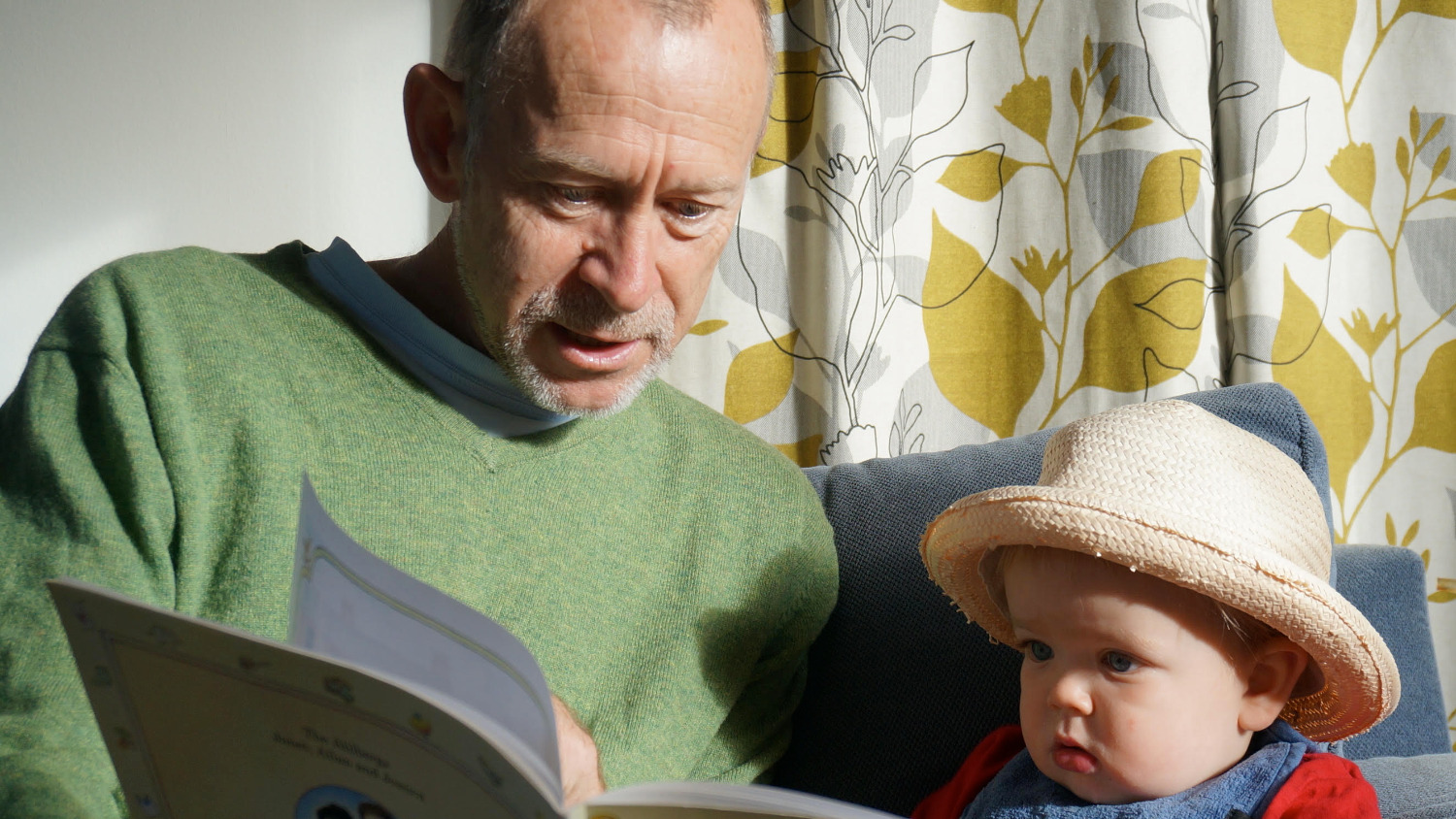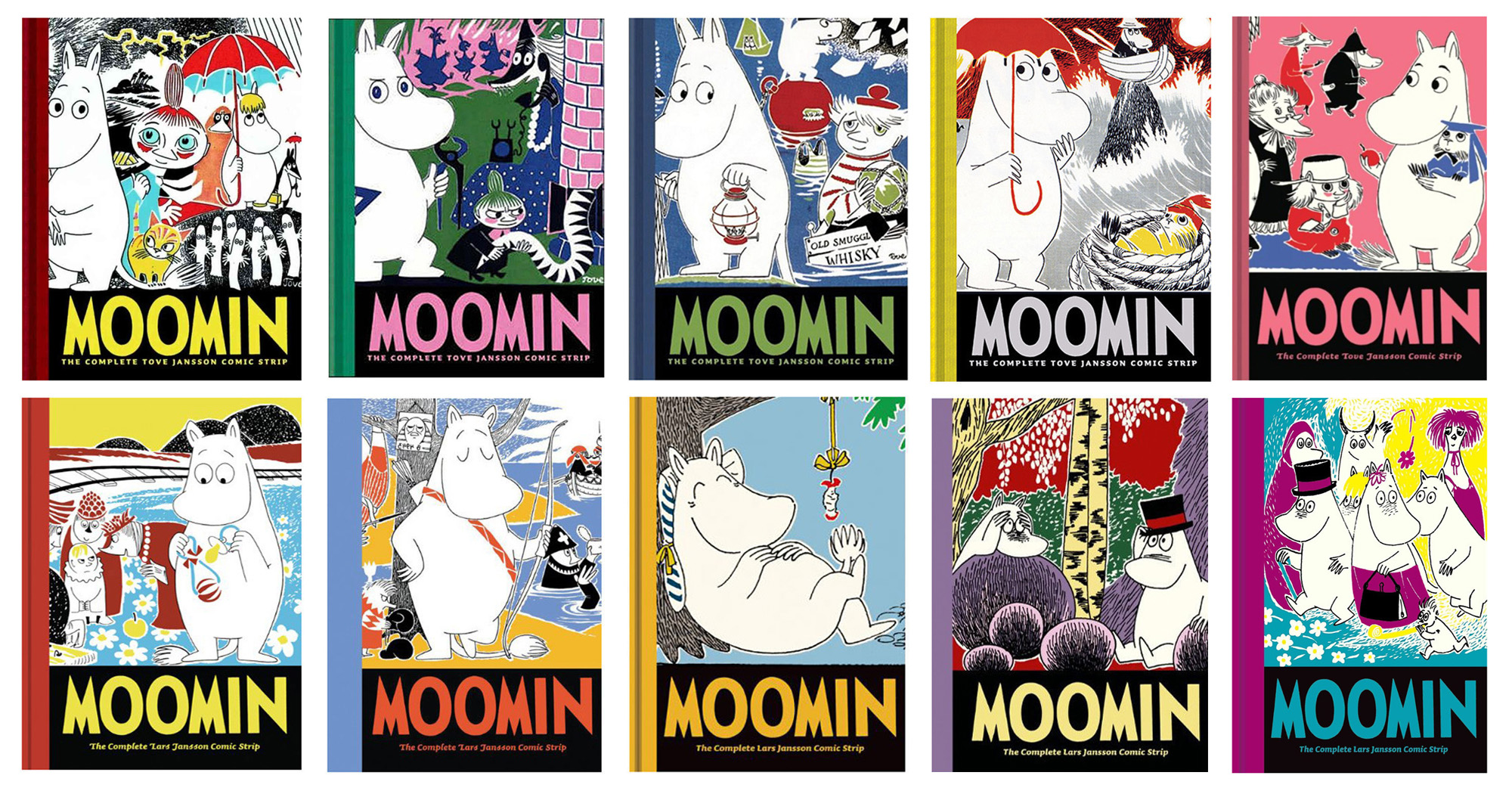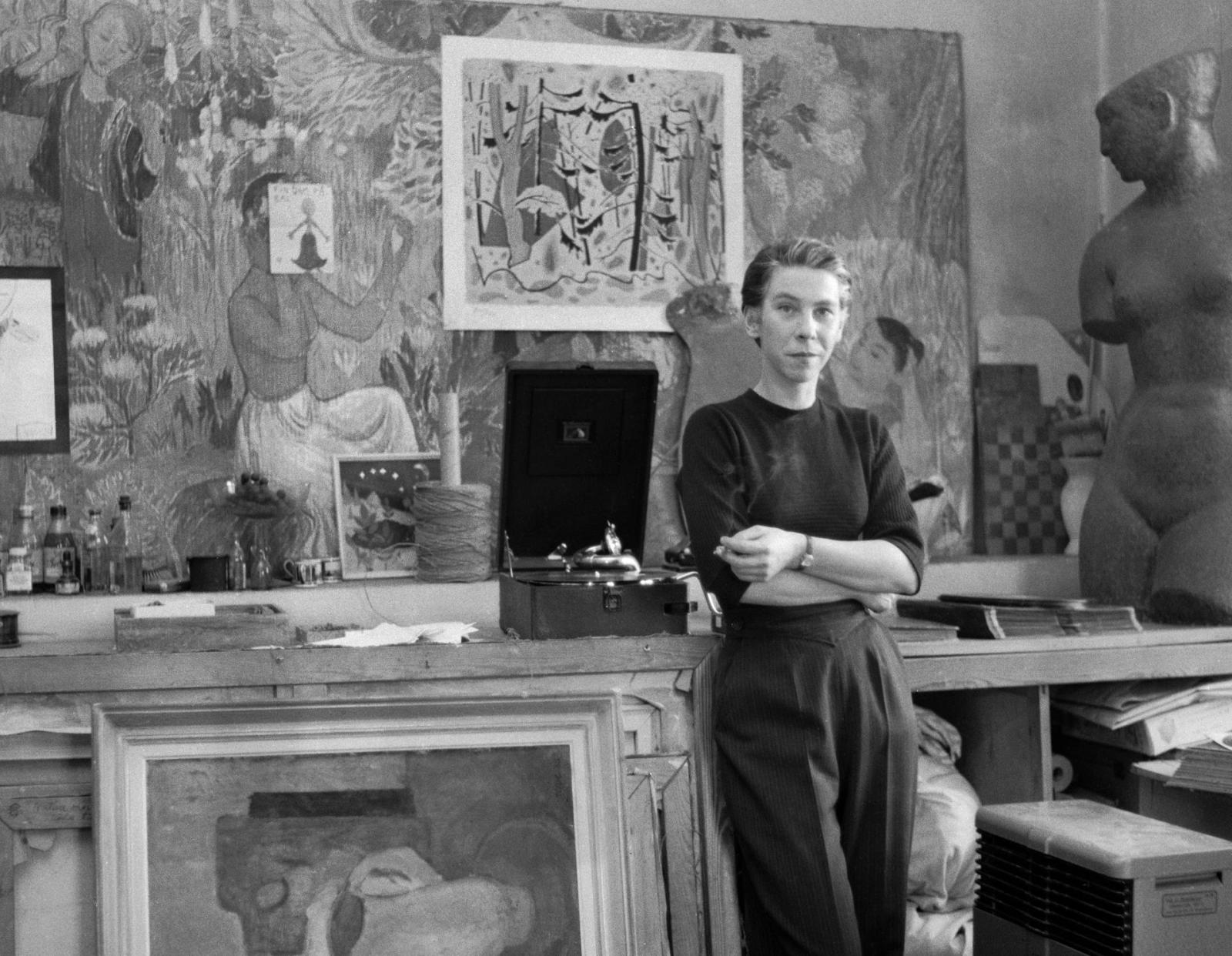Raymond Huber’s childhood was enriched by the stories of the Moomins, told by Tove Jansson. Here, he tells us about moomintrolls, hattifatteners and more. Huber’s most recent title, Gecko, illustated by Brian Lovelock, was released this month.

I’ve just started my grandsons on the Moomin novels and I’m delighted to see they can still captivate. These books by Tove Jansson are, I think, the perfect children’s stories – thrilling, comforting, funny, profound, with whimsical illustrations – and their inventiveness has inspired me in my own writing. Jansson’s fantasy world is populated with characters who embody a generous philosophy of life. Young Moomintroll lives with his dreamy family, but life is far from dull, with earthquakes, comets and floods, and a stream of challenging visitors.
’A truly great book should be read in youth, again in maturity, and once more in old age’, (Robertson Davies) and it’s true of the seven Moomin novels which progress through the stages of life. I’ve read many times them since I was a child and my favourites change as I change. The first three books are lively adventures, the next two are family stories, and the final novels become quite reflective.
The first novel, Comet in Moominland (1946) was my childhood treasure with its apocalypse, monsters, and reassuring ending: ‘The comet is gone and your mother is near, to keep you from harm till the morning is here.’ The more humorous Finn Family Moomintroll (1948) introduces Thingumy and Bob who talk in Spoonerisms (“Don’t nake any totice”), the Groke who freezes everything, and the electrified worm-like Hattifatteners. One scene that’s always stayed with me is of a ‘Dictionary of Outlandish Words’ coming to life – a writing metaphor that has often fired my imagination. The Exploits of Moominpappa (1950) is the story of father’s orphan days and with this book Moomin-world was now fully formed.
One scene that’s always stayed with me is of a ‘Dictionary of Outlandish Words’ coming to life – a writing metaphor that has often fired my imagination.
Moominsummer Madness (1954) and Moominland Midwinter (1957) are down-to-earth novels focussed on the family. In the summer tale the Moomins stage a play as a way of coping with a natural disaster; while in winter Moomintroll has to grow up; alone in a frozen world, facing challenges without his hibernating parents. The winter story has the most evocative writing of all the Moomin books and is my current favourite. The final words, ‘The end and the beginning’, herald a change of tone for the series.
In Tales of Moominvalley (1962) the characters now deal with internal problems: fear of disaster, a traumatised child who has become invisible, and the Hattifatteners searching for their feelings.

Moominpappa at Sea (1965) is an adventure in which Pappa takes the family to live on a barren island where each member is tested to their limit. When I re-read this book in my 40s, I discovered what I’d missed as a child: this was a story about a father’s mid-life crisis (the clue was in the title!). I loved that a children’s book could speak to all ages like this; something I’ve aimed at in my junior novels (the story must grip both my inner 10 year old and my adult self).
The final book, Moominvalley in November (1970) has no Moomins in it. The minor characters gather at the deserted Moominhouse and realise it’s time to move on: ‘The whole of Moominvalley had somehow become unreal, the house, the garden and the river were nothing but a play of shadows on a screen’. It’s a low-key end to the series, written just after Jansson’s mother died: perhaps it’s a book to return to later in life.
Their Creator
Tove Jansson was born in 1914 into a Moomin-like family: affectionate, creative, and liberal: her father a sculptor, her mother an illustrator of postage stamps. They belonged to the minority Swedish community in Finland and had a fairly bohemian lifestyle.
Her father and Moominpappa both shared a love of adventure and the sea, and the family holidayed on islands. After an argument with one of her brothers Tove drew an ugly creature on the toilet wall, the Moomin prototype. The name came from an uncle who warned her a troll was guarding the pantry.
Jansson trained as an artist and was a well-known painter in the 1940s. She was a cartoonist for the satirical magazine Garm and was brazenly ‘beastly to Hitler and Stalin’ (as she said): one cartoon had a tantruming Hitler in nappies eating slices of Europe-cake. Her black and white illustrations in the Moomin novels are one of the keys to their success. There are spectacular, impressionistic scenes, the tiny heroes dwarfed by the elements – witness the tidal wave in Moominsummer – as Finland was by the Nazis. Anchoring the child is the reassuring roundness of the Moomins with their featureless faces; enabling readers to project themselves onto the characters.

Tolerance for those who don’t fit in is a strong theme of the books. The lonely, the off-beat, the orphaned and needy are welcomed in Moomin Valley. Jansson herself was unconventional, living her adulthood on a remote island with a lifelong female partner. She said she wanted her stories to revolve ‘around a family whose main characteristics are probably a kindly confusion, an acceptance of the world around it…’. Moominmamma, based on her own mother, embraces every visitor and holds the family together.
Jansson wrote that ‘Every children’s book should have a path in it where the writer stops and the child goes on. A threat or a delight that can never be explained. A face never completely revealed.’ This path is often expressed in the importance given to the weird minor characters. The Groke is an enigmatic blob who slides around the Scandinavian landscape like a B-movie monster – a tragic figure, unable to find warmth because of her icy touch. The Hattifatteners are an army of travelling worms almost blind and without feelings (tourists perhaps?). This element of mystery appeals to me as a writer, and I’ve found that science is a great source of strange ideas for my books.
In the 1950s, Jansson drew a Moomin comic strip aimed more at adults which ran in forty newspapers around the world for many years. The strips have recently been reprinted in four magnificent hardback volumes. They’re a fine balance of humour and a caring philosophy. The happy-go-lucky Moomins tend to live in the moment and the comics often comment on materialist society. Here we see Moomintroll keen to settle down: ‘I only want to live in peace, plant potatoes and dream!’ he says.
The happy-go-lucky Moomins tend to live in the moment and the comics often comment on materialist society.
Jansson also illustrated five Moomin picture books, including her first children’s story, Moomins and the Great Flood (1945) which was her response to the War – this book and her first novel were initially commercial flops (writers take heart!). She also illustrated editions of The Hobbit, Alice in Wonderland, and The Snark.
Jansson received the Hans Christian Andersen Award in 1966 for contributions to children’s literature. The Moomins
have been translated into thirty-four languages and they’ve been made into stage shows and movies. Later in life, Jansson wrote specifically for adults. She died in 2001.
Tove Jansson proved that it was possible be ‘a writer of children’s books for adults’ (Boel Westin). Moomin world is a timeless gift to readers of all ages.

Raymond Huber
Raymond is a children's author, freelance editor and writing teacher. His children's novels areStingand Wings; his picture book, Flight of the Honey Bee, has been an international success. Raymond's non-fiction book,Peace Warriors, has inspiring stories of non-violent resistance (Mākaro Press). He's also written many school readers (Learning Media, McGraw Hill)) and textbooks for NZ and the US; short stories; and poems.



